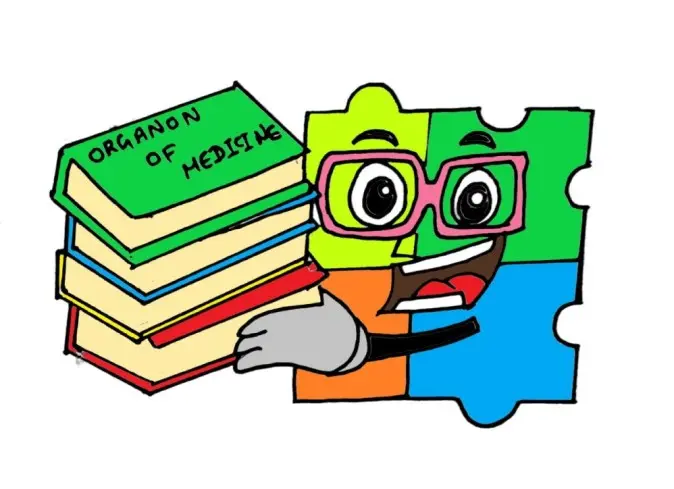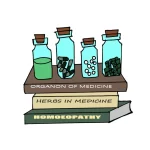
INTRODUCTION
There are total five editions which were published during Dr. Hahnemann’s life time. The 6th edition was published after his death. We will be discussing All 6 EDITIONS OF ORGANON OF MEDICINE in this article.
The fifth edition was published in 1833 and 6th edition in 1921, 78 years after his death in 1843.
The manuscript of 6th edition was made ready by Dr. Hahnemann before his death.
The first edition was published in 1810 with the title “Organon of Rational Art of Healing”.
The title was changed to “Organon of Healing Art”.
IMPORTANCE OF ORGANON
The organon of medicine helps the physicians to acquire the knowledge of homoeopathic system of medicine to treat the patient holistically and rationally.
Dr. J. T. Kent writes in his lectures,
“Homoeopathy is applicable to every curable case but the great thing to know how to apply this”.
Let’s run through each of them with many interesting details.
Table of Contents
ToggleFIRST EDITION
Publication year– 1810 AD.
Number of aphorisms- 259.
Title– German: “Organon Der Rationallen Hellikunde”.
English meaning: “Organon Of Rational Art of Healing” or “Instrument of Knowledge of Rational Medical Science According to The Law of Homoeopathy”.
Appearance
- In 1810 while Hahnemann’s stay was at Torgau.
- Published by the famous publisher Arnold of Dresden.
- Financed by a grateful patient of Hahnemann.
- All the copies were sold out in just 9 years of publication.
Content
- Very small introductory chapter (compare to other editions).
- No table of contents.
- Hahnemann put a small poem on the title page, written by the poet “Gellert”
The original poem was written in German language, the English translation of it is as follows:
“The truth we mortals need,
Us blest to make and keep
The All-wise slightly covered over,
But did not bury deep”.
- In 1805 AD the same stanza included in Hahnemann’s “Medicine of Experience”.
- Some unintentional Homoeopathic cures mentioned in medical books of that time also included in introductory chapter.
- Views of different authors on Homoeopathic cures were also mentioned.
Translation
- In 1913 AD C.E. Wheeler translated into English from German.
SECOND EDITION/ AUGUMENTED EDITION
Publication year- 1819 AD.
Language– German.
Number of Aphorisms– 318.
Actual number was 315 because after aphorism 215 we find directly aphorism 219 due to printing mistake.
Title– German: “Organon der Helikunst”.
English meaning: “Instrument of Knowledge of Healing Art” or “Organon of Healing Art”.
Appearance
- This edition was written as an “Augmented (enlarged) edition”.
- Published from Leipzig.
Modifications
- This edition had a portrait of Hahnemann sitting with a pen in his hand which was painted by Junge of Stolzel.
- The stanza of Gellert’s poem was replaced by two words “AUDE SAPERE” which remained in all the following editions.
- The word “Helikunde” (medical science) was replaced by “Helikunst” (Healing art) from the 2nd edition of organon.
Content
- This edition contained a lengthy introduction chapter as an answer to the criticism of 1st
- This chapter elaborated the ill effects of allopathic medication and some irrational methods of treatment adopted by the allopathic physicians of that time.
Translation
- In 1824, by Ernst George von Brunnow from German to French.
THIRD EDITION/ IMPROVED EDITION
Publication year– 1824.
Language– German.
Number of aphorisms– 320.
Title– The name and the title page remained the same.
“Organon of Healing Art”.
Appearance
- This edition was published while Hahnemann’s stay in Koethen.
- This was published as “Improved Edition”.
- A beautiful photograph of Dr. Hahnemann sitting with a pen in his hand was printed.
Content
- The wrong numeration was not resolved.
- Hence, it actually contained 317 aphorisms.
FORTH EDITION
Publication year- 1829 AD.
Language– German.
Number of aphorisms– 292.
Title– The title remained the same as “Organon of Healing Art”.
Appearance
- Published as an improved edition.
- This edition was also published during Hahnemann’s stay at Koethen.
Content
- Many changes were made in aphorisms.
- Few of them were excluded.
- The introduction to “The theory of chronic diseases” was first time appeared.
- In this theory, Hahnemann described the “PSORIC MIASM” as the cause of most chronic diseases.
- The chapter “Introduction to Organon” was introduced in this edition.
Translation
- In 1833 AD, by Charles H. Devrient form German to English.
- This was the first ever English translation of organon of medicine.
FIFTH EDITION
Publication year- 1833 AD.
Language- German.
Number of aphorisms– 294.
Title– Same as before “Organon of Healing Art”.
Appearance
- This edition was the last publication of Hahnemann’s life.
- It was published in his later years of life while Hahnemann’s lived in Paris.
- It was referred as the textbook in the majority of the medical colleges all over the world.
- This was the most precise and popular edition out of six editions.
Content
- “The theory of vital force” was introduced in this edition.
- “The theory of drug dynamization” was also introduced.
Translation
- In 1849 AD, by R.E. Dudgeon (Robert Ellis Dudgeon) from German to English, which was again translated by him in 1893 AD.
- The same edition was also translated into English by C. Wesselhoeft.
SIXTH EDITION/ POSTHUMOUS EDITION
Publication year– 1921 AD.
Language– German.
Number of aphorisms– 291.
Title– The title of this edition again changed to “ORGANON OF MEDICINE”.
Appearance
- The manuscript of this edition was kept ready by Dr. Hahnemann himself in February 1842 AD, but it came into light in 1921 AD.
- This edition was published 78 years after the death of our master. Hence, it is called as “The Posthumous (after death) Edition”.
Historical insights
- At the age of 63 years Dr. Hahnemann while his last living years at Paris completed this edition carefully, going through paragraph by paragraph, making changes like some new additions, exclusions or adding of footnotes etc.
- Sadly, Hahnemann could not publish his last work, during his lifetime.
In a letter Dr. Hahnemann wrote to his publisher friend Mr. Schuab “I have now, after eighteen months of work, finished the 6th edition of organon, the most nearly perfect at all”.
Dangers of being lost
The manuscript of 6th edition was in danger of being lost twice.
First time during the Franco-Persian war in 1870-1871 AD.
Second time during the world war of 1914-1918 AD.
But with the efforts of Dr. Richard Haehl and Dr. William Boericke this edition was published in the year of 1921 AD.
Controversies over the originality and reliability
For about 78 years, the original writings of 6th edition remained in the “Estate of Boenninghausen” without any attention.
Some homoeopaths suspected that madam Melanie had made some changes in the 6th edition.
Some failed attempts to publish this edition
In the year 1856, Dr. Boenninghausen made his first attempt to publish this 6th edition, but he failed.
↓
In 1865, the second attempt was done by Suss Hahnemann (a grandson of Samuel Hahnemann) but he also failed.
↓
The third attempt was made by Dr. Constantine Hering.
↓
The fourth attempt was made by Dr. Carroll Dunham.
↓
Fifth attempt by Dr. Dayes of London.
↓
Even Dr. Hering’s offer of publishing the English version of 6th edition was rejected by madam Melanie.
↓
Finally, Dr. Richard Haehl purchased this edition from the heir of Boenninghausen.
Hence, in the year of 1920 AD, 6th edition of organon of medicine was first came to light of the world in German language by Dr. Richard Haehl.
Later, in 1921 AD it was translated and published in English by Dr. William Boericke.
(You can also go through the details of ground plan of 6th edition by selecting the link.)
Content
- This edition contains total 291 aphorisms.
- The new scale of medicine preparation “The 50 millesimal scale” and “The theory of repetition of doses” are introduced.
- At some place the term “Vital force” had been replaced by “Vital principle”.
- At certain places, the term “life principle” was also used by Dr. Hahnemann.
- In aphorism 11, a long footnote on “Dynamic influence” has been added.
- In aphorism 282 footnote, the repetition of doses even several times a day including chronic diseases has been recommended (totally different concept from 5th edition).













It’s awesome
Full of necessary and sufficient basic info.. Just awesome..
Nothing is better than visual and pictorial content for memory. Thank you for making it interesting. It is helpful in last minute of Competitive exams
Happy to hear from you…
Its awesome and easy to refer
Thank you so much 🙂